The draft is a time of hope and promise, and after it's all over, a scout sits with his staff and marvels over the players the team just picked. Well, sometimes they don't work out as planned, as is the case for most of these 20 first-rounders who didn't make the top 30 in my re-draft of the 2008 class. Some are truly 'busts,' while others just haven't been good enough to fully justify their first-round selections. Some failed because of injuries, some because their tools weren't good enough, some because they just weren't good picks in the first place.
You can see the 2006 "misses" column for comparison (spoiler alert: There weren't nearly as many misses). And to look at how I would re-draft the first round of the '08 draft, click here.
Note: All WAR figures come from the indispensable Baseball-Reference.com.
 1.Tim Beckham: first overall, Tampa Bay Rays (4.0 WAR)
1.Tim Beckham: first overall, Tampa Bay Rays (4.0 WAR)
Beckham is still just 28 and may yet have a career as a utility infielder, but for a player taken first overall, he hasn't come close to expectations. I don't think any one thing slowed Beckham's ascent as a prospect; he struggled on defense, wasn't that advanced as a hitter when he first signed, and had trouble with conditioning and with a suspension for marijuana use. He's still never posted a full-season OBP of .350 or better at any level, and his 22 homers last year nearly doubled his output from any previous season. (Five of those came in the insane three-week stretch he had right after the Rays traded him to Baltimore for pitching prospect Tobias Myers, after which Beckham went back to not producing.)
The Rays were choosing between Beckham and Buster Posey in the 2008 draft, and they chose … not wisely, in hindsight, although at the time Beckham was seen as at least the top prep prospect in the class. (It wasn't a great class for prep hitters, unfortunately; only two high school position players drafted and signed in 2008 have produced at least 10 WAR since then, Eric Hosmer and the out-of-baseball Brett Lawrie.) It turned out to be a pick that altered two franchises, as the Rays' catchers have produced a total of 7.5 WAR from 2009 through today, less than Buster Posey produced by himself … in 2012 alone (7.6).
 2.Brian Matusz: fourth overall, Baltimore Orioles (2.3 WAR)
2.Brian Matusz: fourth overall, Baltimore Orioles (2.3 WAR)
Matusz was a very advanced four-pitch lefty from the University of San Diego. He ripped through the minors and reached the majors in 14 months, had a successful rookie year as a starter in 2010 (3 WAR), and then proceeded to post the highest ERA ever for a pitcher who made at least 10 starts in a season in 2011 – 10.69, a shade above the previous record set by the late Roy Halladay.
Matusz had injury issues that year, including an intercostal strain, and his velocity was down for most of the season, but his pure stuff was back by 2012. His changeup became totally ineffective, so right-handed batters killed him, and he struggled to keep the ball in the park when working from the stretch. He was there at the same time Jake Arrieta was also scuffling and clashing with the coaching staff, including pitching coach Rick Adair -- perhaps Arrieta was the lucky one who got out, while Matusz's career stalled permanently. He threw a few innings for Triple-A Reno last year and remains unsigned.
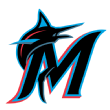 3.Kyle Skipworth, sixth overall, Miami Marlins (-0.1 WAR)
3.Kyle Skipworth, sixth overall, Miami Marlins (-0.1 WAR)
High school catchers are a historically risky proposition in the first round, and Skipworth is one of the all-time busts in that department: His major league career amounts to three at-bats, a walk, and zero hits, while his minor league career line was .211/.278/.381 across parts of nine seasons. He had power and threw OK, but never could hit in any sense of the term.
I should have stuck with my first instinct on this one -- even when Skipworth homered at what was then the AFLAC All-American Game, I didn't like the swing, but there was so much industry support for him the next spring that I overruled myself.
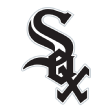 4.Gordon Beckham, eighth overall, Chicago White Sox (6.0 WAR)
4.Gordon Beckham, eighth overall, Chicago White Sox (6.0 WAR)
Beckham raked in college and in the minors, reached the majors in 2009, had a tremendous rookie year, and … stopped hitting. Maybe it was the huge hitch in his swing, which he had as an amateur, but that never held him back until the 2010 season. From then until his last MLB appearance in 2017, he hit .235/.297/.356, but somehow received over 3,000 PA to prove it wasn't a fluke.
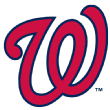 5.Aaron Crow, ninth overall, Washington Nationals (did not sign)
5.Aaron Crow, ninth overall, Washington Nationals (did not sign)
The Nats ended up botching the negotiations for Crow, with allegations of an offer made after the midnight signing deadline, a failure that didn't really work out well for most parties involved. Crow fell a few spots the next year to Kansas City and never seemed to recover from the lost summer/fall of pitching, while the Nats' GM who couldn't complete the deal, Jim Bowden, resigned amid an ethics scandal that winter. Mike Rizzo took over and used the compensation pick in 2009 to draft and sign Drew Storen, which did work out for the team.
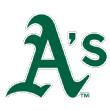 6.Jemile Weeks, 12th overall, Oakland Athletics (1.1 WAR)
6.Jemile Weeks, 12th overall, Oakland Athletics (1.1 WAR)
Rickie's younger brother played parts of six years in the majors but only sparingly after 2012. He didn't have Rickie's elite bat speed, had no power (but tried to pull the ball too often) and never settled into a clear position.
 7.Brett Wallace, 13th overall, St. Louis Cardinals (-0.6 WAR)
7.Brett Wallace, 13th overall, St. Louis Cardinals (-0.6 WAR)
Ah, Brett Wallace, how I thought you would hit. Wallace hit everywhere in college, and, in what I thought was a huge positive marker for him, had no trouble left-on-left, something you seldom see in left-handed amateur hitters.
It turns out that Wallace, whose body was, shall we say, less than svelte, could hit lefties well because they spun the ball away from him, and his trouble rotating his hips didn't affect him the way it did against right-handers who could run the ball on the inner third against him. Wallace did play nearly 500 major league games and hit 40 homers, but nearly all of his reps were at first base or as a DH, wiping out the little value he created with his bat.
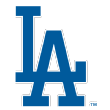 8.Ethan Martin, 15th overall, Los Angeles Dodgers (-0.5 WAR)
8.Ethan Martin, 15th overall, Los Angeles Dodgers (-0.5 WAR)
Martin was a two-way guy in high school who looked like a first-rounder as a hitter the summer before the draft, starring at the Area Code Games, but came out pumping 95 mph the next spring -- back when that was unusual for a prep pitcher -- and flew up the board as an arm instead. He walked way too many guys in pro ball from his first season on and was done after 2015.
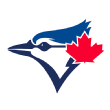 9.David Cooper, 17th overall, Toronto Blue Jays(0.1 WAR)
9.David Cooper, 17th overall, Toronto Blue Jays(0.1 WAR)
Cooper was supposed to be a safe college bat who would hit for average but didn't offer much ceiling. When he didn't hit for average, however, there wasn't anything left to keep him on a roster. I do wonder if the launch-angle revolution might have helped him, as his swing was really flat.
 10.Ike Davis, 18th overall, New York Mets (5.2 WAR)
10.Ike Davis, 18th overall, New York Mets (5.2 WAR)
I saw Davis on Cape Cod, at Wareham, where his college coach at the time, Pat Murphy of Arizona State, was in the stands holding court with a few scouts. He asked me, "Do you know what I think Davis is going to be in the big leagues?" I assumed he wanted to talk up his player to a member of the media, so I said, "Everyday first baseman?" And he said, without hesitation, "Left-handed reliever."
Davis went out as a hitter, of course, showed promise in his rookie year in 2010 (.264/.351/.440), but caught Valley Fever, a vicious fungal infection where the spores of one of two species of fungus get into the lungs and can, in rare cases, cause ongoing, chronic illness.
He did convert to the mound in 2017, throwing well in the Arizona Rookie League as a 31-year-old newbie pitcher, and is currently a free agent.
 11. Josh Fields, 20th overall, Seattle Mariners (0.2 WAR)
11. Josh Fields, 20th overall, Seattle Mariners (0.2 WAR)
The 2008 draft was the last one ESPN televised before it moved to the MLB Network, and, I guess rather infamously, I destroyed this pick when it was announced, pointing out that 1) drafting college relievers in the first round is dumb and 2) the Mariners weren't good enough to even argue that they would be an exception to this rule. (It's still dumb, by the way.)
Fields was drafted in the second round the year before by Atlanta, didn't sign, then held out almost another full year after Seattle took him and didn't debut in pro ball until 2009. He reached the majors with Houston in 2013, and has found a career as a back-of-the-bullpen reliever, first with the Astros and now with the Dodgers, for whom he's produced just over a win of value.
 12.Ryan Perry, 21st overall, Detroit Tigers (0.2 WAR)
12.Ryan Perry, 21st overall, Detroit Tigers (0.2 WAR)
Perry was in the big leagues the following April and out of pro ball by June of 2015. A college reliever at the University of Arizona, he had velocity but not movement or command and never missed many bats in the minors.
 13.Reese Havens, 22nd overall, New York Mets (did not play in majors)
13.Reese Havens, 22nd overall, New York Mets (did not play in majors)
Havens is the highest-drafted player from 2008 to never reach the majors; his pro career was marred by injuries and he stopped hitting after 2011, playing his last pro game in May of 2013. He was part of the biggest college team I have ever seen, the 2008 South Carolina Gamecocks, who also featured first-rounder Justin Smoak and second-rounder James Darnell.
 14.Allan Dykstra, 23rd overall, San Diego Padres (-0.5 WAR)
14.Allan Dykstra, 23rd overall, San Diego Padres (-0.5 WAR)
As the story goes, the Padres really wanted Havens, and when the Mets picked their pockets, they didn't have a good plan B in place and panicked, taking Dykstra despite his lack of a clear position or enough power to profile on a corner. He drew a ton of walks in pro ball -- two for every three games he played in the minors -- but couldn't produce enough beyond the walks to matter, especially since he played only first base.
 15.Anthony Hewitt, 24th overall, Philadelphia Phillies (did not play in majors)
15.Anthony Hewitt, 24th overall, Philadelphia Phillies (did not play in majors)
Hewitt was a huge reach at the time, a 19-year-old Connecticut prep schooler who had a great body and huge raw power but no idea how to hit, getting overmatched the previous summer at various showcases. He struck out 158 times with just 13 walks in his first year in full-season ball, eventually reached Double-A, never posted a .300 OBP in any season, and was out of organized baseball after 2015.
 16.Christian Friedrich, 25th overall, Colorado Rockies (-0.6 WAR)
16.Christian Friedrich, 25th overall, Colorado Rockies (-0.6 WAR)
I loved Friedrich when I saw him on Cape Cod the previous summer, but his pro tenure was marked by injuries and trouble getting right-handers out.
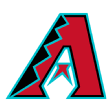 17.Daniel Schlereth, 26th overall, Arizona Diamondbacks (0.0 WAR)
17.Daniel Schlereth, 26th overall, Arizona Diamondbacks (0.0 WAR)
The A's took Schlereth in the eighth round in 2007 as a draft-eligible sophomore who'd had Tommy John surgery, but he returned to school and made a lot more money in 2008. He was in the majors just under a year later, but never threw enough strikes, thanks in part to a violent delivery, and was last seen in Double-A Jacksonville last September.
 18.Carlos Gutierrez, 27th overall, Minnesota Twins (did not play in majors)
18.Carlos Gutierrez, 27th overall, Minnesota Twins (did not play in majors)
A college closer at Miami and a low-slot sinkerballer, Gutierrez never missed bats in pro ball and was done by July 2013.
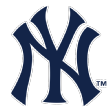 19.Gerrit Cole, 28th overall (did not sign), New York Yankees
19.Gerrit Cole, 28th overall (did not sign), New York Yankees
The story, perhaps apocryphal, goes something like this: after the draft, Cole's father told the Yankees, "whatever amount you offer my son, I can match it," and so Cole went to UCLA instead of joining the Bombers. I had Cole No. 10 on my draft rankings in 2008, and No. 1 in 2011 when he was next eligible, coming off his best year for the Bruins and still only beginning to tap into his potential as a front-line starter.
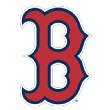 20.Casey Kelly, 30th overall, Boston Red Sox(-1.6 WAR)
20.Casey Kelly, 30th overall, Boston Red Sox(-1.6 WAR)
Kelly was a shortstop/right-handed pitcher/quarterback with a two-sport scholarship to Tennessee, and he could really field the heck out of short but couldn't hit.
The Red Sox gave him a year as a hitter before putting him on the mound, and within a few months he was hitting 95-96 mph and showing what looked like a plus change and above-average breaking ball, with an easy delivery and great athleticism. After he went to the Padres in the Adrian Gonzalez trade, nothing went right for Kelly -- hitters got a good look at the ball, his fastball was too straight, he blew out his elbow, and he's now in the Giants' system with a 7+ ERA in Triple-A at age 28.
Despite all of that, he has never had much of a chance to work out of the bullpen, with just 28 total relief appearances in his entire pro career, and I hope someone at least tries him there before closing the book on him.
